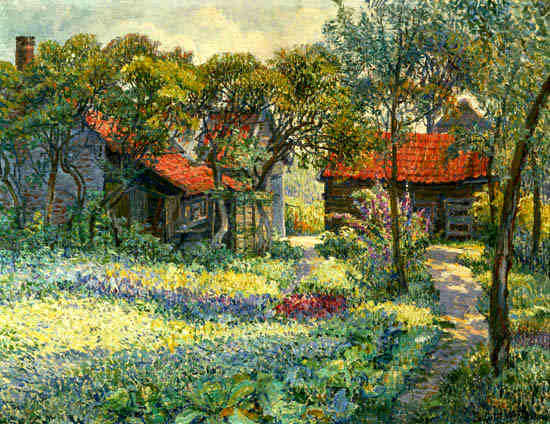
Juliette Wytsman: “De Geméisgaart”
Your Wildlife Garden
Here are some tips to get you going
Solitary bees are amongst the most important pollinators for wild and garden plants. For early spring nectar, plant winter aconite, lesser celandine and lungwort. For summer nectar, how about the beautiful purple anise hyssop, mallows, marjoram, liatris spicita and red campion. In autumn bees love sedums and verbena bonariensis.
When planning a garden to attract butterflies, think too about food plants for caterpillars and plan a year-round food source. By planting primrose, sweet rocket, thyme or michaelmas daisies you are providing opportunities for butterflies to feed for over half the year.
Even grass can have structure: short or long-filled with drifts of beneficial grassland species. How about an aromatic mint lawn or a lawn filled with clovers and vibrant birds-foot trefoil. Grasshoppers and meadow butterflies, crickets and skippers love long grass!
Water is especially important. Even the smallest pond can be good for invertebrates and amphibians. We recently built a wildlife tank in an old wheelbarrow! You can visit it at The Fruitery, one of Transition Belsize’s food growing sites.
Don’t forget the value of dead wood in winter – a perfect hibernating place for many species. Leave leaf litter strewn above your dormant snowdrops and hellebores during winter; it’s the equivalent of a warm duvet for them and worms just love to nosh on it, nourishing the soil in the process!
Stud your shady woodland edge with white dead nettle, yellow archangel, edible wild garlic, wood sorrel and sweet woodruff.
Did you know that birds love devils bit scabious, buckthorn and teasels. Hoverflies love bronze fennel. Ladybirds love yarrow. Echinacea and rudbeckias are loved by late summer pollinators. Sedum’s seedheads are later enjoyed by finches. Painted lady butterflies lay their eggs on thistles.
